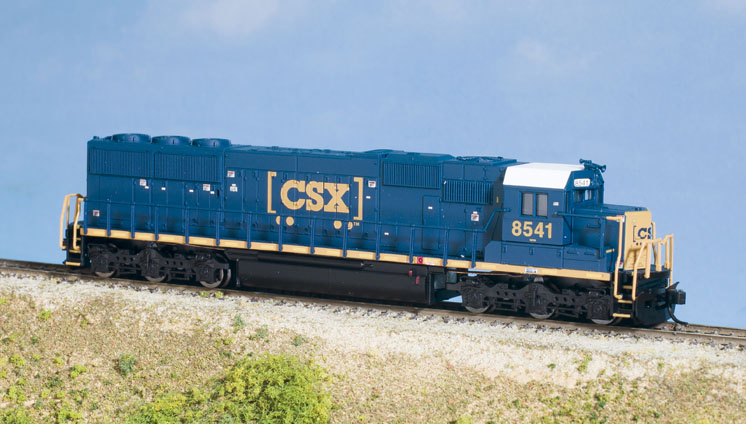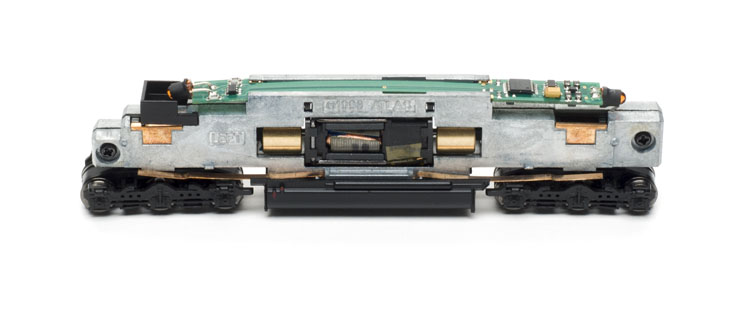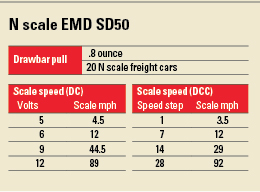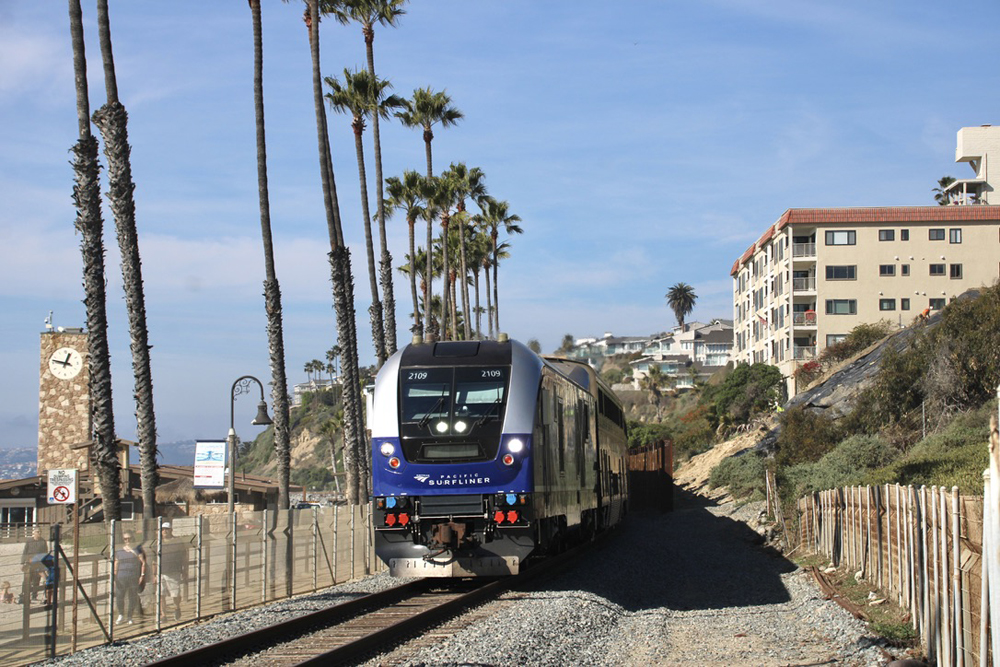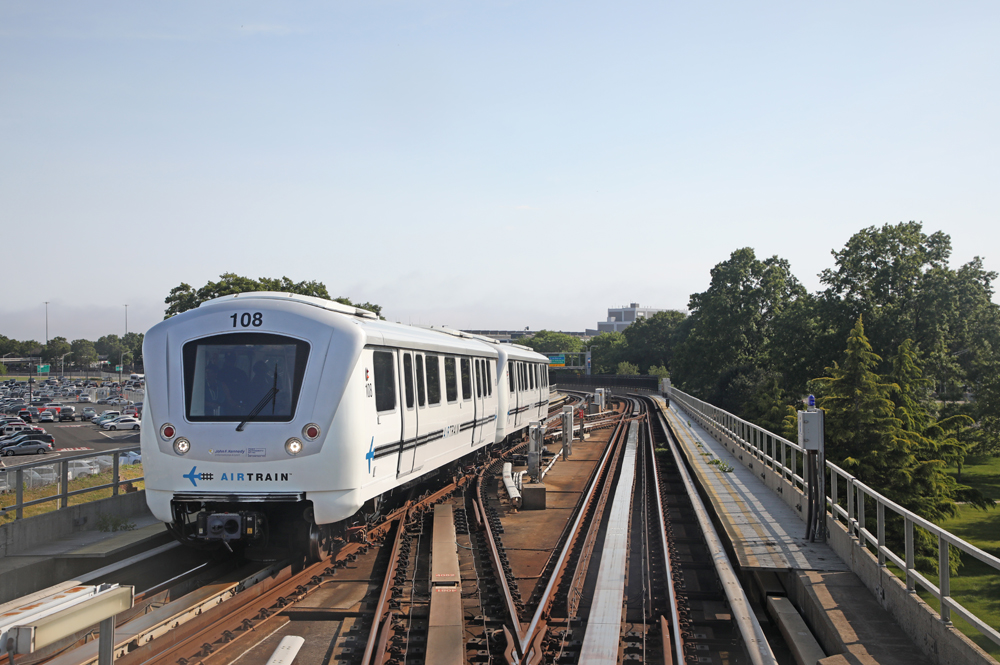Atlas Model RR Co. has upgraded its N scale Electro-Motive Division SD50 diesel with an improved drivetrain that offers smoother performance at more prototypical speeds. The Master Line series model is also available in new paint schemes, both of which model locomotives still on the rails today.
Now-retired senior editor Jim Hediger reviewed Atlas’ previous N scale SD50 in our September 1999 issue. Today’s model has improvements to both the shell and the mechanism, such as a new slow-speed motor and a separately applied nose brake wheel.
History. When EMD introduced the 3,500-hp SD50 in 1981, the locomotive made a number of improvements over its predecessors. The most important change was its “Super Series” electronic control package, which included a ground-scanning radar to monitor the locomotive’s true speed. This controls the sanders and traction system, resulting in a 25 percent improvement in wheel adhesion. Electro-Motive Division claimed this let three SD50s do the work of four older units.
This, combined with improvements to fuel efficiency, made the SD50 a popular offering. A total of 492 were initially sold to a dozen railroads, 60 of which were wide-cab SD50Ms bought by Canadian National. The biggest purchasers were Conrail, which rostered 135 of the units, and Seaboard System, one of the first purchasers, which bought 81.
Numerous SD50s are still on the rails today. The paint schemes offered by Atlas are both worn by modern-day locomotives. These include CSX Transportation (former Seaboard units) and the Utah Ry. (ex-Hamersley Iron).
Appearance. The model is neatly painted in CSX’s current blue-and-yellow scheme. The blue paint is even and smooth; the yellow “boxcar” logos on the sides are opaque and without voids. A subtly different shade of yellow represents the reflective safety stripes on the sill. The numerous safety stickers and other graphics, while too small to read even with magnification, are well done, though the American flags on the cab’s sides are positioned almost a scale foot too high, according to prototype photos.
All the model’s major dimensions matched those on drawings published in the January 1984 MR. The model also has a straight sill, appropriate for no. 8541’s heritage as a former Seaboard System unit (other engines had stepped sills). Other details differ from prototype photos of no. 8541, though.
The model has a three-chime horn on the front of the cab roof, a feature seen on the full-size CSX no. 8541 when it was wearing the railroad’s yellow, blue, and gray YN2 livery. However, the horn was moved when the engine was repainted in the blue boxcar logo scheme in 2013. In photos from that year, the prototype’s roof instead bears antennas, a GPS dome, and a pair of air conditioners, all of which are absent on the model. The N scale version also lacks the prototype’s ditch lights, m.u. cable, and long-hood-mounted bell. These details could be added by the modeler.
The class lights, which were covered in the prototype’s YN2 days, were plated over smooth after the repaint; the covers are visible on the model. Markings under the road number on the model identify the locomotive as an SD50; in the 2013 photos the prototype is lettered SD50-2 under the road number, having been de-rated to 3,000 hp.
Mechanism. To take off the body, remove the two coupler mounting screws and pull the couplers and draft-gear boxes out through the pilots. The shell then snaps off. The sills, hood, and cab are separate pieces, so be careful with them.
The motor, dual brass flywheels, and gear towers are secured between the halves of the split die-cast metal frame. The NCE Digital Command Control (DCC) motor decoder is also clamped between the two halves at the top of the frame; the lighting is on this board. In addition to providing heft and a solid feel to the model, the frame conducts electricity from the phosphor-bronze truck wipers to the motor and decoder.
All six axles are driven and all wheels pick up electricity. All wheels were in gauge. Likewise, the Accumate couplers were mounted at the correct height.
Performance. I first tested the locomotive under direct current. The lights came on and the engine started to move, albeit hesitantly, at 4V. It rolled smoothly at 4.5 scale mph when I got it to 5V.
Atlas has changed the model’s drive train since its previous version. While the early model would reach 206 scale mph at 12V under direct current, the new one tops out at a much more prototypical 89 scale mph. A lower top speed means more of the power pack’s voltage range will be useful, which also translates to better slow-speed control.
I then switched to Digital Command Control. At first, the engine refused to move until I got to speed step 8. I could then back down to speed step 7 or 6, but could not start the engine from a stop at lower steps. After I programmed the decoder’s starting voltage (Vstart, Configuration Variable 2) to a value of 40, the model started and ran at 3.5 scale mph in speed step 1. After this change, the top speed at step 28 was 92 scale mph, just a bit over the prototype’s top speed of 88 mph in its highest available gearing. (The more commonly used 70:17 gearing allowed 70 mph.)
After the test track runs, I ran the locomotive on our Red Oak project railroad. The engine had no problems hauling 20 freight cars through the layout’s 13″ radius curves and no. 6 turnouts, forward and backward.
Advancements in railroading technology made the prototype SD50 an attractive product for railroads seeking economy and pulling power. Similarly, model railroaders looking for performance and crisp graphics should be pleased with the improvements Atlas has made to its N scale SD50.
Price: $129.95 (direct-current model), $169.95 (Digital Command Control motor decoder)
Manufacturer
Atlas Model Railroad Co.
378 Florence Ave.
Hillside, NJ 07205
www.atlasrr.com
Era: 1981 to present; 2013 to present (as painted)
Road names (two numbers each): CSX (dark blue and yellow) and Utah Ry. (gray, red, and yellow). Also available undecorated.
Features
▪▪Accumate couplers at correct height
▪▪Directional light-emitting-diode lighting (headlights and number boards)
▪▪Five-pole skew-wound motor with dual brass flywheels
▪▪Flexible engineering plastic handrails
▪▪Minimum radius: 93⁄4″
▪▪Weight: 3.7 ounces





